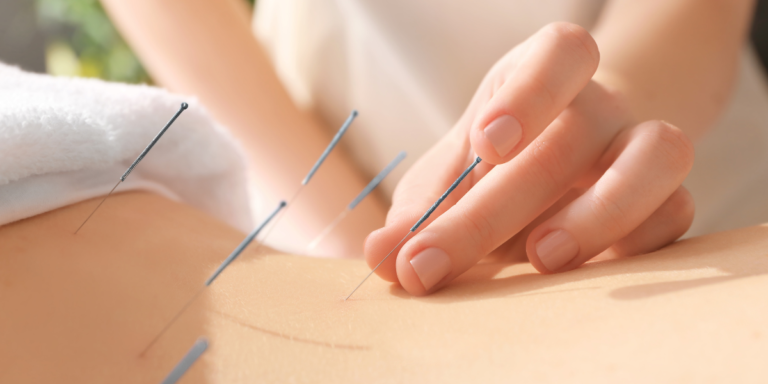In recent years, there has been growing awareness about eating disorders, yet many still associate these conditions primarily with women. However, men are not immune to these issues. One condition that has emerged in discussions about male eating disorders is androlorexia, a term describing the extreme pursuit of thinness in men. Much like its female counterpart anorexia nervosa, androlorexia involves dangerous eating patterns, obsessive weight control, and an unhealthy fixation on body image. This article will provide a detailed exploration of androlorexia, examining its symptoms, causes, treatment options, and societal implications.
What Is Androlorexia?
Androlorexia is a male-specific eating disorder characterized by an intense fear of gaining weight, leading to extreme measures such as excessive dieting, exercise, and calorie restriction. It mirrors the symptoms of anorexia nervosa but is seen more in men. Although eating disorders in men have historically been underdiagnosed, the term androlorexia highlights the unique pressures and societal expectations men face regarding body image.
Symptoms of Androlorexia
Understanding the signs and symptoms of androlorexia is essential for early detection and intervention. Here are some of the common symptoms seen in individuals suffering from this disorder:
1. Extreme Weight Loss or Fear of Weight Gain
Men with androlorexia have an obsessive fear of gaining weight. Even when they are underweight or at a healthy weight, they may feel they are “too fat” and continue to lose weight at the expense of their health.
2. Caloric Restriction
One of the hallmark behaviors is limiting caloric intake to dangerous levels. Those affected may eat very small portions, skip meals, or completely avoid certain types of food (especially those considered high in calories or fat).
3. Excessive Exercise
Men with androlorexia often engage in compulsive exercise. They may spend hours at the gym, not necessarily to build muscle but to burn calories. The goal is to become as lean as possible, not just fit.
4. Preoccupation with Appearance
Men suffering from androlorexia may spend excessive time in front of the mirror, critiquing their appearance. They may see flaws in their body image that are not visible to others.
5. Avoiding Social Situations Involving Food
Those with androlorexia may avoid events that involve eating, such as family dinners, parties, or going out with friends. The fear of being pressured to eat or having to confront their food anxieties can lead to isolation.
6. Emotional and Psychological Changes
Androlorexia is not just a physical condition but a mental health issue as well. Men suffering from it may experience anxiety, depression, irritability, or an overwhelming sense of guilt after eating. The disorder can severely impact their emotional well-being.
Causes and Risk Factors of Androlorexia
1. Societal and Cultural Pressures
One of the major contributors to androlorexia is the pressure men face to conform to an idealized body image. In modern society, there is often an expectation for men to have a lean, muscular physique. Media, advertising, and social platforms often showcase these “perfect” male bodies, leading some men to engage in unhealthy behaviors to attain this appearance.
2. Psychological Factors
Underlying mental health conditions such as anxiety, obsessive-compulsive disorder (OCD), or low self-esteem can make individuals more vulnerable to developing androlorexia. The need for control, particularly over one’s body and eating habits, is often rooted in deeper psychological issues.
3. Genetics and Family History
As with other eating disorders, there is evidence to suggest that genetics may play a role in the development of androlorexia. Those with a family history of eating disorders or other mental health issues may be at a higher risk.
4. Personal Trauma
For some men, personal trauma such as bullying, body shaming, or abuse can trigger disordered eating behaviors. Negative comments about their weight or appearance may lead to an unhealthy fixation on body image.
Societal Expectations and the Stigma Around Male Eating Disorders
While awareness of eating disorders has increased in recent years, the stigma surrounding men and mental health still prevents many from seeking help. Eating disorders are often seen as a “female problem,” leaving men who suffer from androlorexia feeling isolated or misunderstood. This stigma can result in men denying or hiding their condition, which only worsens the disorder over time.
Additionally, male eating disorders are under-reported and under-researched. Society’s traditional views of masculinity, which emphasize strength and stoicism, make it harder for men to admit vulnerability. As a result, androlorexia may be overlooked or misdiagnosed.
The Impact of Androlorexia on Health
1. Physical Health Consequences
Like other eating disorders, androlorexia can have severe physical health consequences. These may include:
- Malnutrition: Extreme caloric restriction leads to nutrient deficiencies, affecting organ function, muscle mass, and energy levels.
- Heart Problems: Dangerous weight loss can result in low blood pressure, irregular heart rhythms, and even heart failure.
- Bone Density Loss: A lack of proper nutrition can weaken bones, increasing the risk of fractures.
- Gastrointestinal Issues: Restricting food intake often results in digestive problems such as constipation, bloating, and acid reflux.
2. Mental Health Consequences
The mental toll of androlorexia is profound. Sufferers often deal with:
- Depression: Constant anxiety about food and weight can lead to depression and feelings of worthlessness.
- Isolation: Avoidance of social situations involving food can result in loneliness and isolation.
- Obsessive Thoughts: Preoccupation with weight, body image, and food can become all-consuming, disrupting daily life.
How Androlorexia Differs from Other Eating Disorders
While androlorexia shares similarities with anorexia nervosa, bulimia, and other eating disorders, it has unique characteristics tied to male experiences.
1. Focus on Leanness vs. Thinness
Unlike anorexia nervosa, which often focuses on extreme thinness, androlorexia centers on achieving a lean, muscular body with minimal body fat. While weight loss is common in both, the goal for those with androlorexia is often not just to be thin but to have a specific body composition.
2. Compulsive Exercise
Exercise plays a particularly central role in androlorexia. Men often use exercise as a way to control their weight, leading to over-exercising and physical exhaustion. This can be more pronounced in androlorexia than in other eating disorders.
3. Prevalence in Certain Populations
Androlorexia is more common in men who engage in sports or professions that emphasize physical appearance or weight control, such as bodybuilding, wrestling, or modeling. This is different from anorexia nervosa, which affects individuals across a wider range of demographics.
Treatment Options for Androlorexia
Just like other eating disorders, treatment for androlorexia requires a multifaceted approach that addresses both physical and psychological aspects of the disorder.
1. Psychotherapy
Psychotherapy, especially cognitive-behavioral therapy (CBT), is a cornerstone of treatment for androlorexia. CBT helps individuals identify and challenge unhealthy thoughts about food, weight, and body image. It also teaches them healthier coping strategies.
2. Nutritional Counseling
A registered dietitian can work with men suffering from androlorexia to develop a balanced, sustainable eating plan. This involves reintroducing healthy foods, improving nutrient intake, and breaking the cycle of extreme dieting.
3. Medical Monitoring
Because androlorexia can cause severe physical health problems, regular medical check-ups are essential. Healthcare providers will monitor weight, organ function, and overall health to ensure the individual is making progress.
4. Support Groups
Group therapy or support groups can offer emotional support and a sense of community for men with androlorexia. Hearing from others who have similar struggles can help individuals feel less isolated and more understood.
Preventing Androlorexia: Promoting Healthy Body Image for Men
Prevention of androlorexia begins with changing societal attitudes toward male body image. Here are some steps that can be taken to promote healthier views of masculinity and body image:
1. Media Literacy
Encouraging men to critically assess the unrealistic body standards portrayed in media and advertising is key. Understanding that these images are often edited and unattainable can reduce pressure to conform to unhealthy ideals.
2. Education on Nutrition and Health
Promoting balanced, sustainable approaches to health and fitness, rather than extreme dieting or exercise, can help men develop a healthier relationship with food and their bodies.
3. Open Conversations
Fostering an environment where men feel comfortable discussing body image and mental health is crucial. Challenging the stigma around male vulnerability can encourage men to seek help when they need it.
Conclusion
Androlorexia is a serious and often overlooked eating disorder affecting men. It results from a complex combination of societal pressures, psychological factors, and personal experiences. Recognizing the signs of androlorexia and understanding its impact on both physical and mental health is crucial for early intervention and recovery. By addressing the unique challenges men face regarding body image and encouraging open conversations, we can break the stigma and ensure that men struggling with androlorexia get the help they need.













